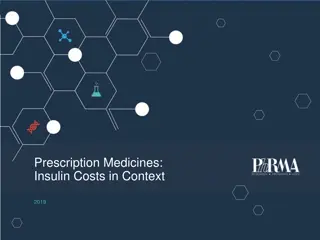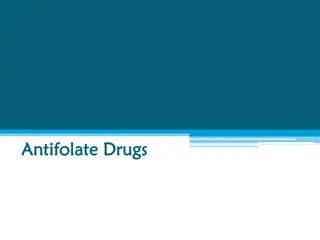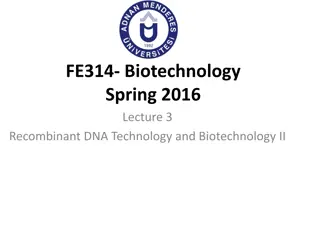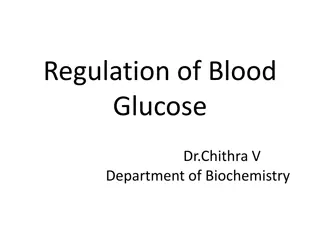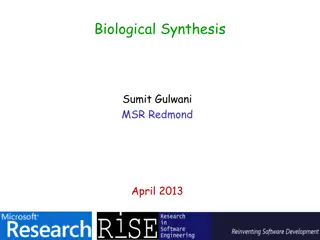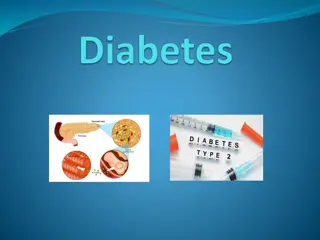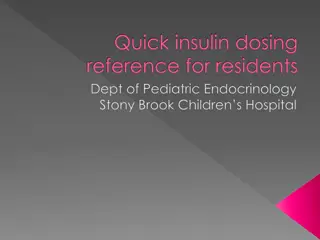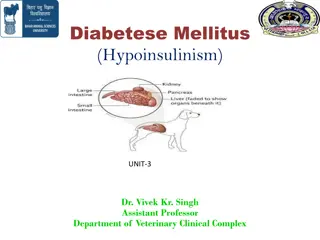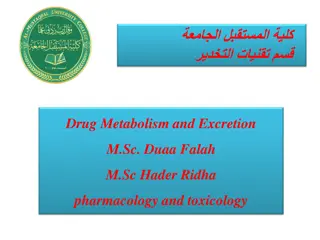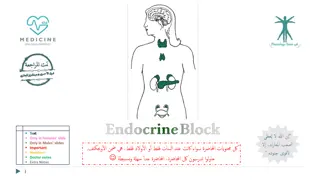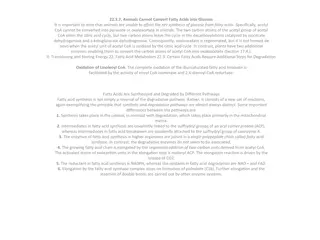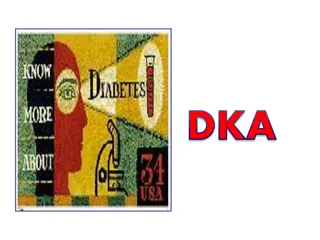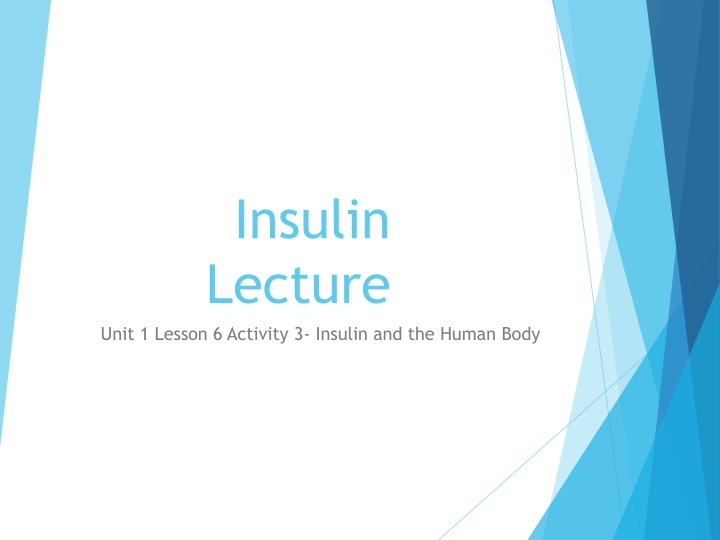
Insulin Synthesis and Regulation in Human Metabolism
Images and diagrams illustrate the role of insulin in regulating glucose and metabolism in the human body. Explore how insulin is synthesized in beta cells, its impact on glucose absorption, and the function of insulin receptors. Learn about the metabolic reactions influenced by insulin, including glucose transport, amino acid transport, and glycogen synthesis, as well as its role in inhibiting lipolysis. Discover the importance of insulin in maintaining balanced glucose levels and facilitating energy usage in cells.
Download Presentation

Please find below an Image/Link to download the presentation.
The content on the website is provided AS IS for your information and personal use only. It may not be sold, licensed, or shared on other websites without obtaining consent from the author. If you encounter any issues during the download, it is possible that the publisher has removed the file from their server.
You are allowed to download the files provided on this website for personal or commercial use, subject to the condition that they are used lawfully. All files are the property of their respective owners.
The content on the website is provided AS IS for your information and personal use only. It may not be sold, licensed, or shared on other websites without obtaining consent from the author.
E N D
Presentation Transcript
Insulin Lecture Unit 1 Lesson 6 Activity 3- Insulin and the Human Body
Beta Cells in the Pancreas Insulin is synthesized in beta cells Insulin helps to regulate metabolism of carbohydrates and fats Insulin is secreted by the pancreas Without insulin to facilitate absorption of glucose the levels become too high
Figure 5 Diagram of the Insulin and Glucose Regulation Model An increase of glucose depolarizes the membrane surrounding the beta cells. Calcium from outside of the beta cell rushes into the beta cell. This increase of calcium facilitates the release of stored insulin. Once the glucose levels drop, insulin release slows down or stops. bio.davidson.edu
Cells and Glucose Without insulin, cells cannot bind with glucose and use this energy source for needed survival. These cells would have to find alternative energy sources like fatty acids.
Figure 6 Insulin Receptor http://arbl.cvmbs.colostate.edu
Insulin Receptor The insulin receptor has two alpha subunits in yellow and two beta subunits as shown in blue. The red lines are the sulfur bonds and form a disulfide bond between the two complexes.
Carbohydrates and Lipids- Metabolism Glucose is regulated by insulin Glucose is extracted during digestion With an increase in glucose the pancreas secretes insulin The liver maintains constant levels of glucose within the boy
Lipoproteins Used in other tissues like adipose Makes triglycerides Insulin inhibits the breakdown of fat in adipose tissue Insulin responsible for accumulation of triglycerides in adipose tissue
Metabolic Reactions and Insulin Insulin stimulates Glucose transport Amino acid transport Glycogen synthase activity Increases rate of general protein synthesis Decreases lipolysis and protein degradation
Insulin and the Effect on the Human Body Insulin regulates many cellular processes Including: DNA synthesis, RNA synthesis, Cell growth, Protein and fat synthesis. Insulin is mainly concerned with the regulation of glucose uptake in the clinical manifestation of diabetes.
Diabetes Diabetes can affect all ethnic groups. Idiopathic diabetes type I- is an insulin dependent condition that manifests usually in childhood. The beta cells are destroyed by an autoimmune response. Idiopathic diabetes Type II- Non-insulin dependent and is characterized by persistent hyperglycemia (excess glucose in the bloodstream). Many causes can be attributed, but obesity seems to be a common factor. Type II can often be controlled through a low carbohydrate diet. Secondary diabetes- has many causes including: Gestational diabetes that develops during pregnancy. Maturity onset diabetes that happens before age 25 causes include: Pancreatic disease, endocrine disease, drug-induced, mutations in genes or receptors
References www.arbl.cvmbs.colostate.edu www.bio.Davidson.edu




